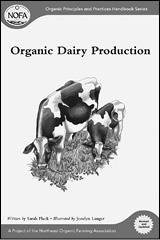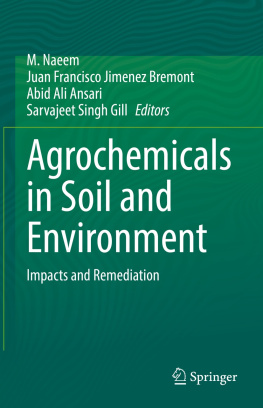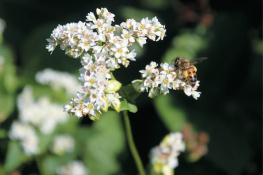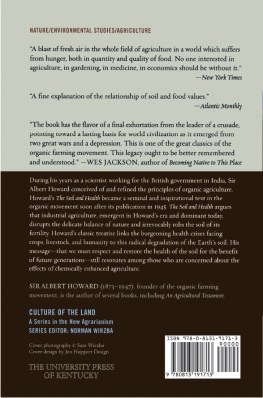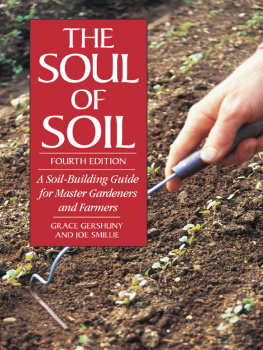Cover

| title | : | Soil and Water Chemistry : An Integrative Approach |
| author | : | Essington, Michael E. |
| publisher | : | CRC Press |
| isbn10 | asin | : | 0849312582 |
| print isbn13 | : | 9780849312588 |
| ebook isbn13 | : | 9780203496145 |
| language | : | English |
| subject | Soil chemistry, Water chemistry. |
| publication date | : | 2004 |
| lcc | : | S592.5.E88 2004eb |
| ddc | : | 631.4/1 |
| subject | : | Soil chemistry, Water chemistry. |
Page i
SOIL and WATER CHEMISTRY
An Integrative Approach
Page ii
This page intentionally left blank.
Page iii
SOIL and WATER CHEMISTRY
An Integrative Approach
MICHAEL E.ESSINGTON

Boca Raton London New York Washington, D.C.
Page iv
This edition published in the Taylor & Francis e-Library, 2005.
To purchase your own copy of this or any of Taylor & Francis or Routledges collection of thousands of eBooks please go to www.eBookstore.tandf.co.uk.
Library of Congress Cataloging-in-Publication Data
Essington, Michael E.
Soil and water chemistry: an integrative approach/by Michael E.Essington.
p. cm.
Includes bibliographical references and index.
ISBN 0-8493-1258-2 (alk. paper)
1. Soil chemistry. 2. Water chemistry. I. Title.
S592.5.E88 2003
631.41dc22 2003058468
This book contains information obtained from authentic and highly regarded sources. Reprinted material is quoted with
permission, and sources are indicated. A wide variety of references are listed. Reasonable efforts have been made to publish
reliable data and information, but the author and the publisher cannot assume responsibility for the validity of all materials
or for the consequences of their use.
Neither this book nor any part may be reproduced or transmitted in any form or by any means, electronic or mechanical,
including photocopying, microfilming, and recording, or by any information storage or retrieval system, without prior
permission in writing from the publisher.
The consent of CRC Press LLC does not extend to copying for general distribution, for promotion, for creating new works,
or for resale. Specific permission must be obtained in writing from CRC Press LLC for such copying.
Direct all inquiries to CRC Press LLC, 2000 N.W. Corporate Blvd., Boca Raton, Florida 33431.
Trademark Notice: Product or corporate names may be trademarks or registered trademarks, and are used only for
identification and explanation, without intent to infringe.
Visit the CRC Press Web site atwww.crcpress.com
2004 by CRC Press LLC
No claim to original U.S. Government works
ISBN 0-203-49614-0 Master e-book ISBN
ISBN 0-203-61160-8 (OEB Format)
International Standard Book Number 0-8493-1258-2 (Print Edition)
Library of Congress Card Number 2003058468
Page v
Preface
Soil and Water Chemistry: An Integrative Approach was written to meet the needs of undergraduate and first-year masters students in soil and environmental chemistry courses. The book may also serve as a reference for professionals in the soil sciences and allied disciplines. The discipline of soil chemistry, or its contemporary counterpart, environmental soil chemistry, examines the chemical and mineralogical characteristics of the soil environment and the chemical processes that distribute matter between the soil solid, solution, and gaseous phases. Essentially, a soil chemistry course and this book offer a basic understanding of the complexity of the natural system that occupies an exceedingly thin layer at the Earths surface. Traditionally, the application of chemical principles to the study of soils has been limited to agronomic systems, and primarily to the behavior of agrichemicals. However, it is well established that as a discipline soil chemistry is not limited to describing the processes that control the availability of nutrients to plants. Indeed, the chemical properties and processes that control the behavior of nutrients and pesticides in soils are the same as those that operate on a vast array of inorganic and organic substances that are outside the purview of production agriculture.
Recent texts in soil chemistry, those published in the last decade, have attempted to embrace the environmental aspects of the discipline, as evidenced by their various titles (e.g., Environmental Soil Chemistry, Environmental Chemistry of Soils, and Environmental Soil and Water Chemistry: Principles and Applications). Topically, Soil and Water Chemistry: An Integrative Approach continues the environmental trend established by its predecessors. However, my intent is to focus on the needs of undergraduate students in soil chemistry and allied disciplines and offer a balanced presentation of the chemical processes operating in soils.
This book contains more information and topic coverage than an instructor might cover in a single semester, and introduces some topics that may be too advanced for an undergraduate course. This extensive coverage is by design. I envision that it will allow instructors the latitude to choose their own essential topics, while providing additional information or a more advanced treatment for others. This book also contains more than 300 original figures and approximately 90 tables to help make the material more accessible. I have also reviewed some of the more common methodologies and analytical techniques used to characterize soil chemical properties. In addition, each chapter contains several sample examples that illustrate problem solving techniques.
Each chapter concludes with a section containing numerous exercises. The problems are not esoteric, nor do they require advanced training in soil chemistry to begin to formulate a solution. Each problem has at one time or another appeared in one of my problem sets. They are tested, relevant, and doable, but ask more of students than to simply (or not so simply) generate a number. It may be inevitable that the path to complete a computation or series of computations is tortuous, but this tortuosity should not blind the student to the purpose for determining a numerical answer. It is important for students to understand concepts, and to recognize that the answers to their computations have physical meaning. I have attempted to include exercises that embody both traits; compute an answer and discuss its significance.
This book has its roots in the undergraduate course I offer in environmental soil chemistry. This is a required course for the environmental and soil sciences major, and is perhaps the last technically oriented course these students will take during their undergraduate experience. I have high expectations of students, particularly with respect to the amount of information retained from prerequisite courses. However, I am also a pragmatic person and recognize that materials introduced in an organic chemistry course taken as a sophomore may have long since been relegated to the
Next page


